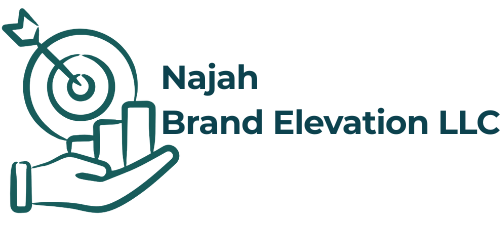The Silent Ambassador of Your Brand

Let’s play a quick game. Close your eyes and picture:
-
The golden arches of McDonald’s
-
Nike’s swoosh
-
Tiffany’s robin egg blue
These images likely popped into your head instantly. That’s the power of strong visual identity – it sticks in people’s minds long after they’ve looked away.
Why Visual Identity Matters More Than Ever
In our scroll-happy digital world, you have less than 2 seconds to make a visual impression. Your logo, colors, and design style work together to:
-
Create instant recognition (Think: You can spot a Coca-Cola can from 20 feet away)
-
Communicate your brand personality (Playful? Professional? Cutting-edge?)
-
Build trust before you say a word (Polished visuals = perceived credibility)
The Cost of Getting It Wrong
-
94% of first impressions are design-related
-
75% of consumers judge credibility based on visual design
-
Brands with consistent visual identities see 3-4x more brand recognition
The 5 Pillars of Powerful Visual Identity
1. Logo Design That Actually Works
Your logo isn’t just a pretty picture – it’s the face of your business. Effective logos:
-
Scale beautifully (from business cards to billboards)
-
Work in black & white (for practical applications)
-
Tell your story at a glance (Apple’s bite = knowledge)
Pro Tip: The best logos often look “obvious” after you see them. Like Twitter’s bird – simple, memorable, perfect.
2. Color Psychology in Action
Colors aren’t just decorative – they’re emotional triggers:
-
Blue = trust (used by Facebook, LinkedIn)
-
Red = urgency (Netflix, YouTube)
-
Green = growth (Starbucks, Whole Foods)
Common Mistake: Choosing colors you like vs. colors that communicate your brand values.
3. Typography That Speaks Volumes
Fonts have personalities:
-
Serif fonts (Times New Roman) = traditional, reliable
-
Sans-serif (Helvetica) = modern, clean
-
Script fonts = elegant, creative
Key Rule: Never use more than 3 fonts (one for headings, one for body, one for accents).
4. Imagery That Feels Authentic
Stock photos scream “generic.” Instead:
-
Use custom photography when possible
-
Develop a consistent filter/style
-
Show real people using your product
Example: Airbnb’s shift from staged photos to authentic guest experiences boosted bookings by 30%.
5. Consistent Application Across All Touchpoints
Your visual identity should be recognizable whether someone sees:
-
Your website
-
Product packaging
-
Social media posts
-
Business cards
Consistency Hack: Create a brand style guide that documents all visual elements.
Common Visual Identity Mistakes
🚫 Designing by Committee (Too many opinions dilute your identity)
🚫 Following Trends Blindly (What’s hot today often looks dated tomorrow)
🚫 Inconsistent Execution (Using different colors/fonts across platforms)
🚫 Overcomplicating (The most iconic logos are often the simplest)
How to Develop Your Visual Identity
-
Start With Strategy (Who are you? Who’s your audience?)
-
Research Competitors (Identify gaps in your market)
-
Work With Professionals (Good design pays for itself)
-
Test With Real Users (Does it resonate with your audience?)
-
Document Everything (Create that style guide!)
Visual Identity Success Stories
-
Mailchimp’s Rebrand – Went from generic to distinctive with bold colors and playful illustrations
-
Burger King’s 2021 Refresh – Returned to retro colors and simplified logo, boosting sales
-
Mastercard’s Symbol Evolution – Progressively simplified while maintaining recognition
Final Thought: Your Visual Identity is a Business Asset
Great design isn’t about making things “pretty” – it’s about creating a visual language that:
✅ Makes your brand instantly recognizable
✅ Communicates your values without words
✅ Builds trust with your audience
Need help crafting a visual identity that stands out? At Najah Brand Elevation, we specialize in creating distinctive, effective brand identities that drive real business results. Let’s make your brand impossible to forget.









